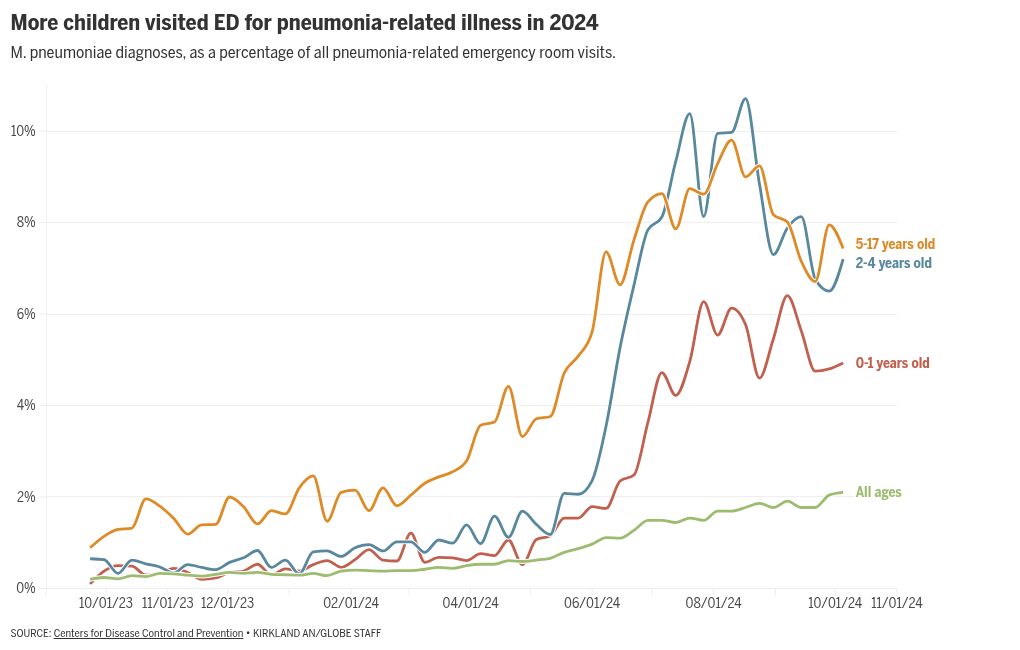
The increase in diagnoses in toddlers is “notable,” health officials said, because the M. pneumoniae bacteria is not typically considered a major cause of pneumonia for that age group.
The CDC did not offer a reason why the increase is occurring particularly among young children, though doctors have suggested that some children may not have developed immunity against the bacteria after staying home during pandemic lockdowns, instead of going to day care or school.
“We had a whole reservoir of kids who weren’t getting the usual annual exposure to viruses or major bacteria,” said Dr. Vandana Madhavan, clinical director for pediatric infectious disease at Mass General for Children. “Now we have a larger pool of kids that haven’t seen some of these infections before.”
The “shifting patterns” of infection have been seen with all sorts of respiratory illnesses since the pandemic, Madhavan said. But unlike viruses such as whooping cough — where increasing diagnoses have been tied to falling vaccination rates — it’s still unclear why M. pneumoniae infections in particular have jumped.
While no major “clusters” of the bacterial infection have yet been reported in Massachusetts, M. pneumoniae infections in the state have increased at similar rates to those seen nationwide, according to a spokesperson for the state Department of Public Health.
M. pneumoniae infections, which occur most often among older children and young adults, are generally mild and often present as a chest cold, according to the CDC. When the infection progresses to pneumonia, it may seem less severe than other forms of the condition, hence the term “walking pneumonia.”
However, for younger children, more severe symptoms of infection may include diarrhea, wheezing, or vomiting, officials said.
The infections are usually identified in in-patient settings, but Madhavan noted that many individuals with “walking pneumonia” only receive outpatient treatment, if they seek treatment at all. Consequently, the actual number of cases is likely to be significantly higher than what has been reported, she said.
While the condition is often mild for adults, it can result in serious complications and even neurological issues for children, Madhavan said.
The CDC recommends that parents be aware of M. pneumoniae symptoms such as fever, headache, and a slowly worsening cough. Children with asthma or reactive airway disease are at higher risk of severe infection.
Parents of children with worsening symptoms, such as wheezing or difficulty breathing, should seek medical attention, officials said.
Madhavan said that, even though walking pneumonia presents differently in each case, it’s important for parents to pay close attention to any lingering or unusual symptoms.
“It’s not one particular thing,” she said. “But if the cough seems to be getting worse, not better; if dehydration is present; if the kids have missed a lot of school — those are all reasons to think … ‘Do we need someone to measure the oxygen level, listen to the lung, take a full exam? To see if there’s anything going on that would need antibiotic treatment?”
Doctors recommend similar steps for preventing the spread of walking pneumonia and other respiratory illnesses: good hygiene, masks, and physical distancing when around other people indoors.
Camilo Fonseca can be reached at camilo.fonseca@globe.com. Follow him on X @fonseca_esq and on Instagram @camilo_fonseca.reports.
